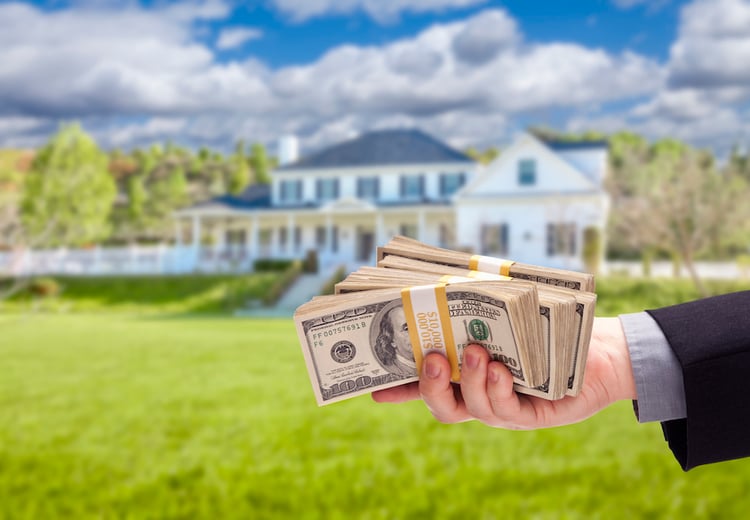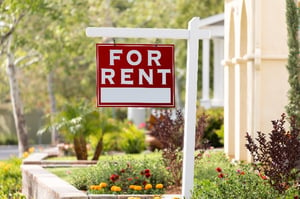People who are lucky enough to have a quarter of a million dollars are one step closer to achieving their dreams. However, in today’s world, $250,000 doesn’t go quite as far as it used to.
That’s why many investors with $250K are looking for ways to grow their investment capital while generating extra income. In this article, we’ll cover options for investing $250K, beginning with tips on what to do before investing a single dollar.
Key takeaways
- Investors can get ready to invest by getting rid of high-interest debt, understanding their tolerance for risk, and putting together a game plan with clear and achievable financial goals.
- Ways to invest $250K include high-yield dividend exchange-traded funds (ETFs), private lending, and rental real estate.
How to get ready to invest
Former basketball coach Bobby Knight once said, “The key is not the will to win. Everybody has that. It is the will to prepare to win that is important.”
When you think about it, investing works the same way. Before investing $250K, it’s important to consider doing a few things first:
- Pay down or completely eliminate high-interest debt, like credit card debt or car loans, because money spent on interest can be used to increase personal cash flow or reduce debt-to-income ratio.
- Create an emergency fund so you have cash on hand to pay for unexpected expenses instead of pausing your investing goals.
- Fully fund a retirement account, such as a 401(k), Traditional/Roth IRA, or SEP-IRA to plan for the future and have extra money available for investing in real estate using a self-directed individual retirement account (IRA).
- Understand how much risk you’re personally willing to assume in exchange for potential reward, especially given your time horizon. Young investors sometimes take on more strategic risk because they have more time to recover from setbacks.
- Create a written investing plan with clear and achievable goals, such as a specific amount of monthly cash flow after 5 years, a total net worth in 10 years, or an age at which to retire.
- Develop a timeline with clear, actionable, and realistic steps toward achieving your goals.

9 ways to invest $250K
Investors with $250K can focus on dividend investing (aka recurring income), capital appreciation, or a combination. In fact, there’s no rule that says you have to put all of that money into a single investment with a single type of return.
Many investors use diversification as a strategy to reduce portfolio volatility by holding assets that have relatively low correlation to one another. For example, over the past 25 years, single-family rentals (SFRs) generated returns that were nearly identical to stock returns, but with less volatility.
It’s also a good idea to get a second opinion before investing. Investors may wish to speak to a financial advisor to identify long-term goals and develop a step-by-step investment strategy to reach them.
1. Rental real estate
Let’s begin with directly investing in rental real estate, because that’s usually the first thing that comes to mind when people have a good sum of money to invest. Owning an SFR home can offer both of the things an investor is looking for:
- Recurring rental income and cash flow, similar to a dividend-paying stock.
- Appreciation in equity over the long term.
The tax code also provides investors with unique tax benefits, such as deductions for property operating expenses; owner expenses, such as business travel and continuing education; and the ability to use depreciation to reduce pretax income.
To be fair, one of the challenges of owning rental property is that the best deals are often found in other cities or states. Smaller secondary and tertiary markets in the Sun Belt with strong population and job growth may offer more affordable housing prices and more robust returns over the long run.
Years ago, owning out-of-state property was a challenge, but today’s technology and online marketplace platforms make remote real estate investing much easier. After investing in a rental property in another city, investors can hire a vetted local property management company to take care of the day-to-day management details or learn about real estate by managing the property themselves.
Investing $250K in rental real estate can go a long way. Instead of paying cash for a house, or using the money for a down payment for a starter home in San Francisco, investors can use the same amount of capital for down payments on multiple rental properties in more affordable markets around the country.
2. REITs
A real estate investment trust (REIT) can be a good way to add additional diversification to an investment portfolio.
REITs don’t offer the same direct benefits that rental property does, such as using expenses to reduce pretax income and pride of ownership. However, publicly traded REIT shares provide liquidity because they are easy to buy and sell, like any other stock. REITS also are an easy way to invest in a wide variety of real estate asset classes, such as residential and commercial real estate and special-use properties like self-storage and data centers.
REITs also may provide consistent dividend returns because, by law, REITs are required to distribute the majority of their profits each year to shareholders in the form of distributions or dividends.
According to Nareit, the dividend yield on all equity REITs through Q3 2021 was 2.92%, while all mortgage REITs generated a dividend yield of 8.41%. The top-performing REIT sectors on a year-to-date basis at the end of Q3 2021 included self-storage, single-family homes, and regional malls, with returns ranging from 30.10% to 56.55%.
As with SFRs, REITs also have a low correlation with stock market volatility.
3. Growth stocks
Growth stocks are shares of publicly traded companies that are expected to grow faster than the stock market average. Common characteristics of growth stocks include:
- Minimal or no dividends
- A competitive or “disruptive” advantage
- Ability to grow exponentially via a network effect with loyal customers
- High gross revenues combined with a high growth rate
Examples of some of the biggest growth-stock winners over the last decade are Meta Platforms (formerly known as Facebook), Amazon, Apple, Shopify, and Netflix. Investors who purchased and held initial public offerings (IPOs) of these high-tech companies have done very well for themselves. For example, $1,000 invested in Amazon in May 1997 would be worth over $2 million as of July 5, 2021, according to Statista.
While many investors hit a home run by buying growth stocks years ago, expecting companies to keep rapidly growing can be a risky investment strategy. Since most growth stocks don’t pay dividends, investors bank on earning a return by timing the market and selling shares at a profit.
Unfortunately, trying to time the stock market, especially with individual stocks, is difficult to do. Over the past 6 months, the share prices of Meta Platforms (Facebook), Netflix, and Shopify have plummeted by 41%, 22%, and 43% respectively, as of February 15, 2022.
Although growth stocks may offer a significant upside, one of the many reasons people invest in real estate is to hedge stock market volatility.
4. High-yield dividend ETFs
High-yield dividend ETFs comprise dividend-paying stocks. In addition to earning annual recurring dividends, investors may profit from the increase of the underlying stock asset values, similar to owning real estate that appreciates over the long term.
Three of the best dividend ETFs for Q2 2022 are VictoryShares US EQ Income Enhanced Volatility Wtd ETF (CDC), VictoryShares US Large Cap High Dividend Volatility Wtd ETF (CDL), and SPDR Portfolio S&P 500 High Dividend ETF (SPYD), according to Investopedia.
Annual dividend yields from CDC, CDL, and SPYD ranged from 2.51% to 4.88%, while year-over-year performance ranged from 29.2% to 31.2%. As the report from Investopedia notes, dividend ETFs are often favored by more income-seeking, risk-averse investors and by investors who balance riskier investments in their portfolios.
5. Crowdfunding
Crowdfunding is a type of group investment where large numbers of investors pool their capital to invest in high-tech projects, films and music, and real estate developments.
For example, some of the top real estate crowdfunding platforms provide investors with access to institutional-grade projects, such as SFR developments, stabilized apartment buildings, and warehouse and distribution centers.
As a rule of thumb, the most attractive crowdfunding investments are only available to high-net-worth, accredited investors. While crowdfunds may offer potential high returns, there are risks to be aware of. Capital is often locked up for an extended period of time, until a project can be built and stabilized, and shares in a crowdfund are generally illiquid and can’t be easily traded the same way that stocks and real estate can.
6. Private lending
Also known as hard money or private money, investors willing to take on more risk may find that private lending is an attractive way to invest $250K. Borrowers who can’t qualify for a traditional loan from a bank or credit union, or people who need fast access to cash for a short period of time, often turn to private lenders.
As this article on Nasdaq.com explains, investors can profit by charging much higher interest rates compared to a 30-year mortgage, while securing the loan with real estate. Private loans are frequently used by borrowers fixing and flipping property and usually have a short loan payback period of 6 months to 2 years.
Private lending is often thought of as a passive investment, but sometimes a project doesn’t go according to plan. If a borrower defaults, a private lender could end up with a half-renovated home that needs to be finished or sold to another flipper.
7. Own a business
While investing in rental property is one form of business ownership, an investor may want to branch out and own another business. Starting a business from scratch, buying an existing business, or investing in a business as a silent partner are 3 ways to own a business.
Acquiring a business that has an established track record and good reputation may be less risky, but the clientele and co-owners will need to have confidence in one another. Sometimes customers who are used to seeing the same face all the time will decide to go somewhere else when a small business changes hands, even if the business is better run than before.
8. Precious metals
Precious metals, such as gold and silver, are historically used as a store of value and a hedge against inflation. In some ways, real estate is similar to gold. Neither precious metals nor real estate can be created out of thin air, and both offer similar potential benefits to investors.
However, in order to profit from precious metals, investors should be prepared to buy and hold over a very long period.
As research from Duke University quoted in The Wall Street Journal notes, gold has maintained its purchasing power over a century or more. Over shorter investment timeframes, the inflation-adjusted price of gold fluctuates about the same as any other asset.
9. Crypto
Bitcoin is often referred to as a digital form of gold, although cryptocurrencies have only been in existence for less than 10 years and don’t have the same historical track record as precious metals. It’s also arguably the most volatile asset on this list.
According to the Bitcoin performance chart from CoinDesk, the currency plummeted 46% from its high in November 2021 through February 2022, which means an investor putting the entire $250K in a Bitcoin basket would have lost about half of the capital invested.
To be fair, Bitcoin has posted impressive gains for investors who hold on for dear life. Since its first market peak in December 2017, the price of Bitcoin has increased by about 250%, despite the volatility.
While the Securities and Exchange Commission (SEC) has yet to approve a Bitcoin ETF (as of February 9, 2022), investors looking for exposure to Bitcoin and other cryptocurrencies may purchase shares of publicly traded companies, such as MicroStrategy, PayPal, or Coinbase.
Closing thoughts
There are a number of ways to invest $250K, each with a different level of risk in exchange for potential reward. Investors looking for a balanced blend of risk and reward may find real estate to be an ideal investment. Owning rental property can generate recurring income and appreciation over the long term while offering tax deductions and benefits unique to investment real estate.









